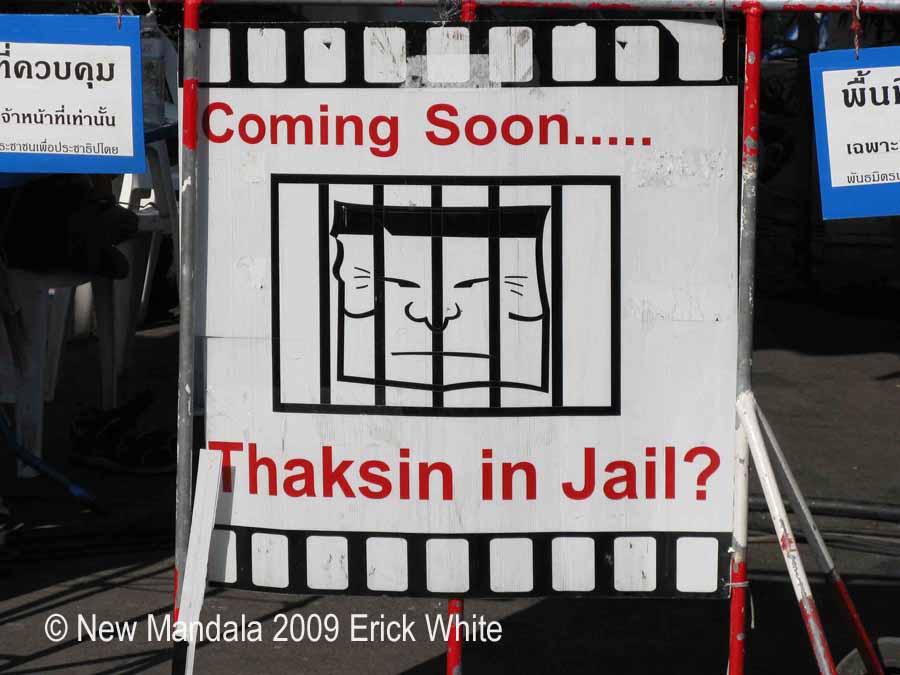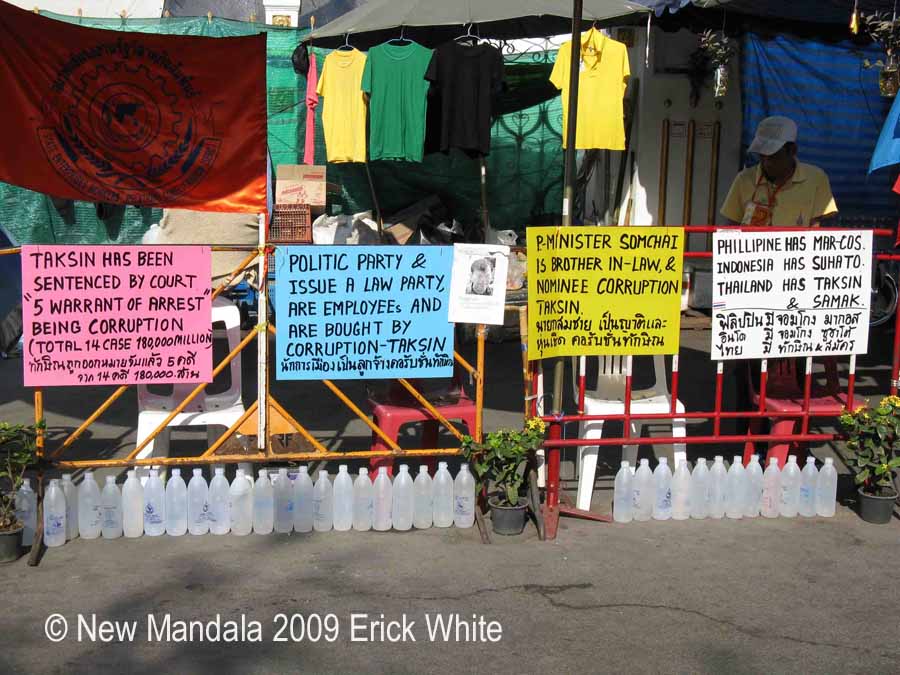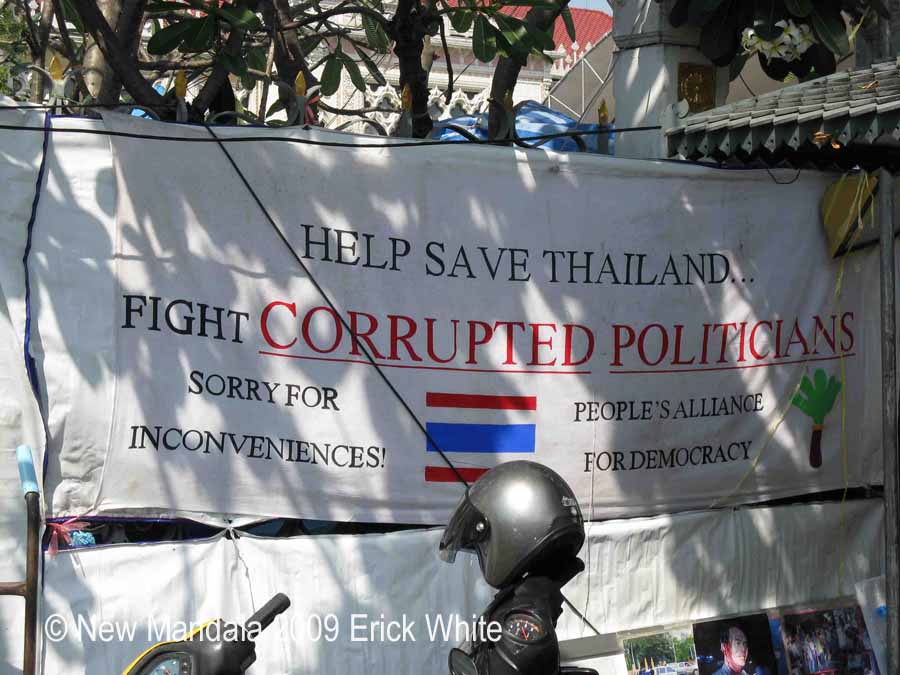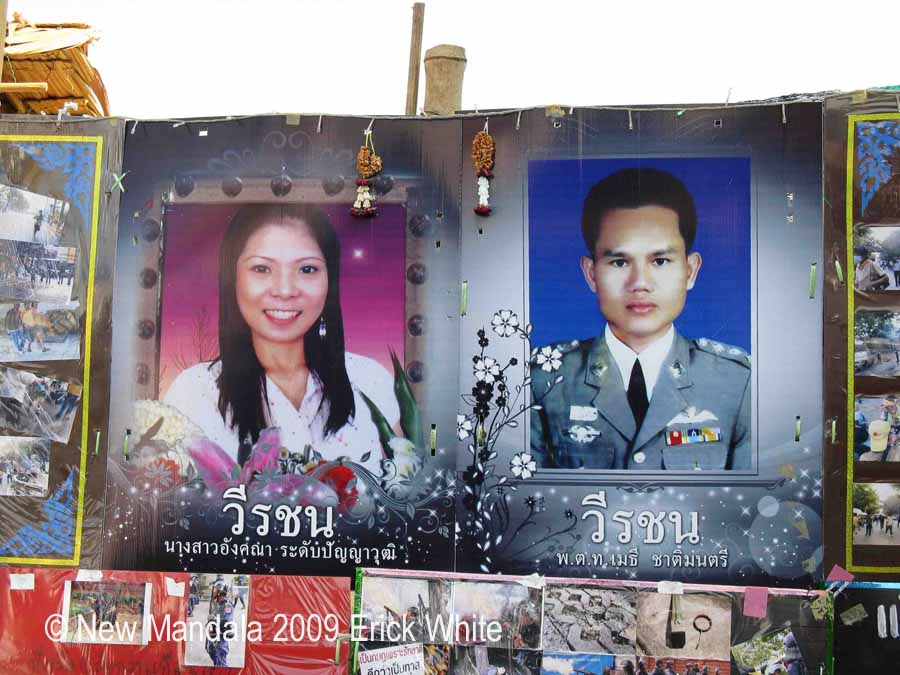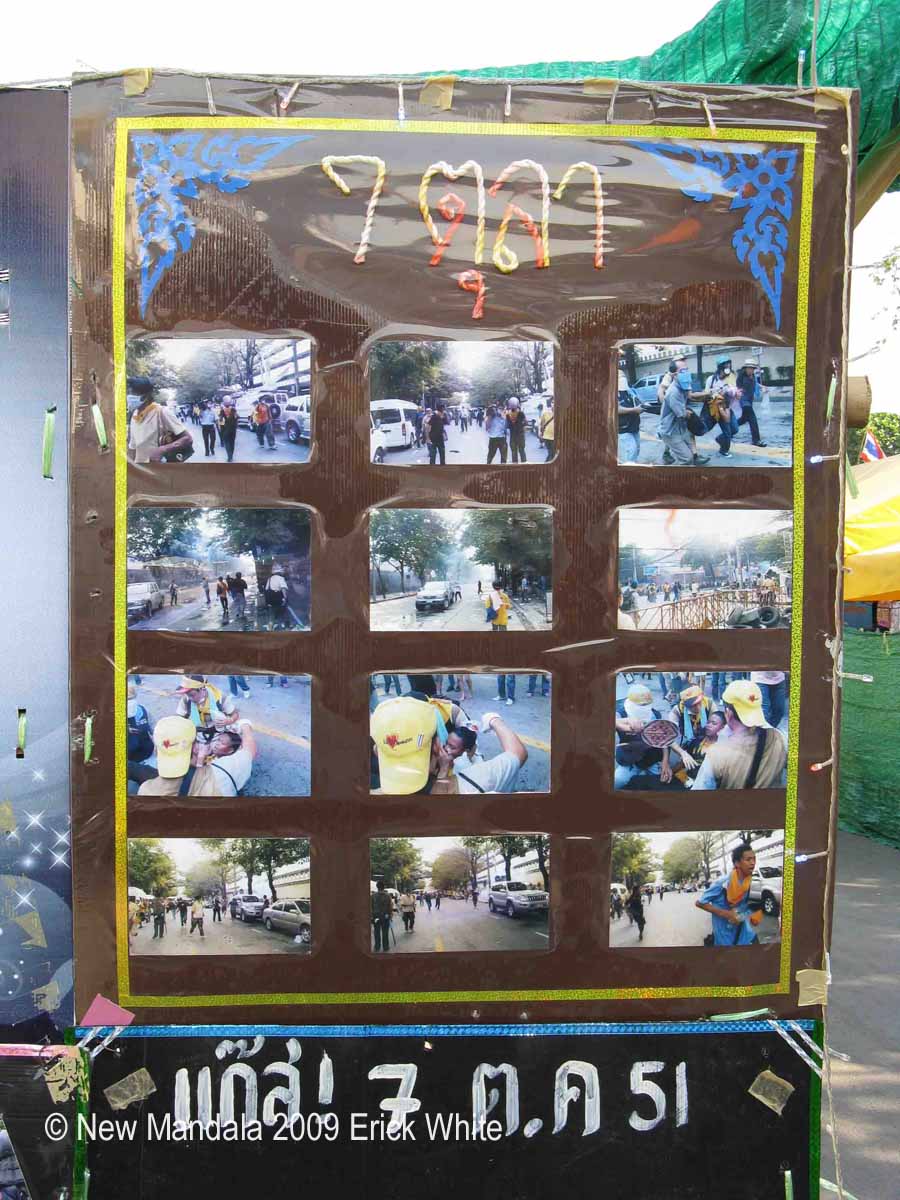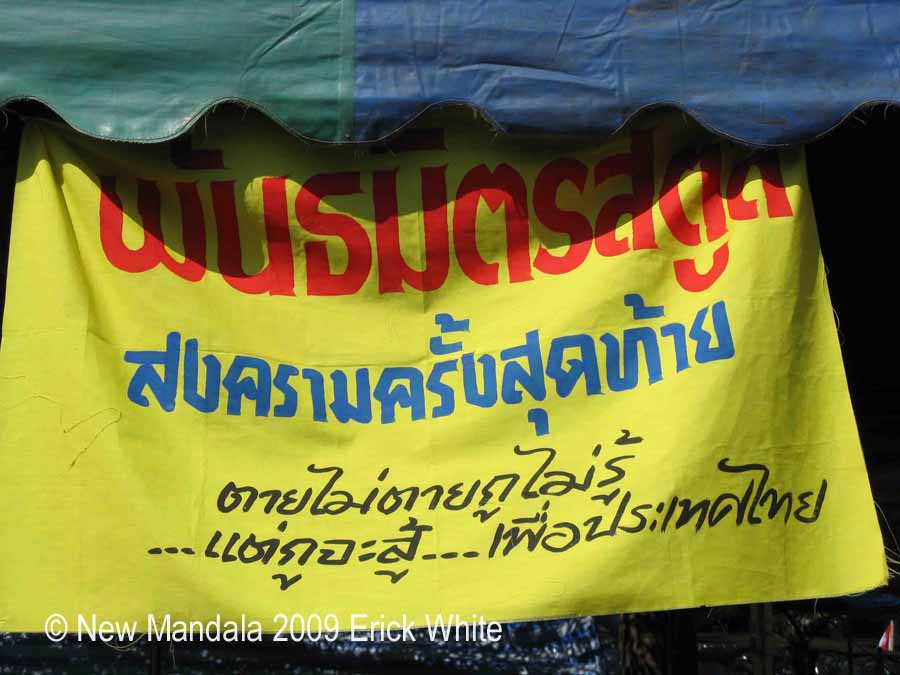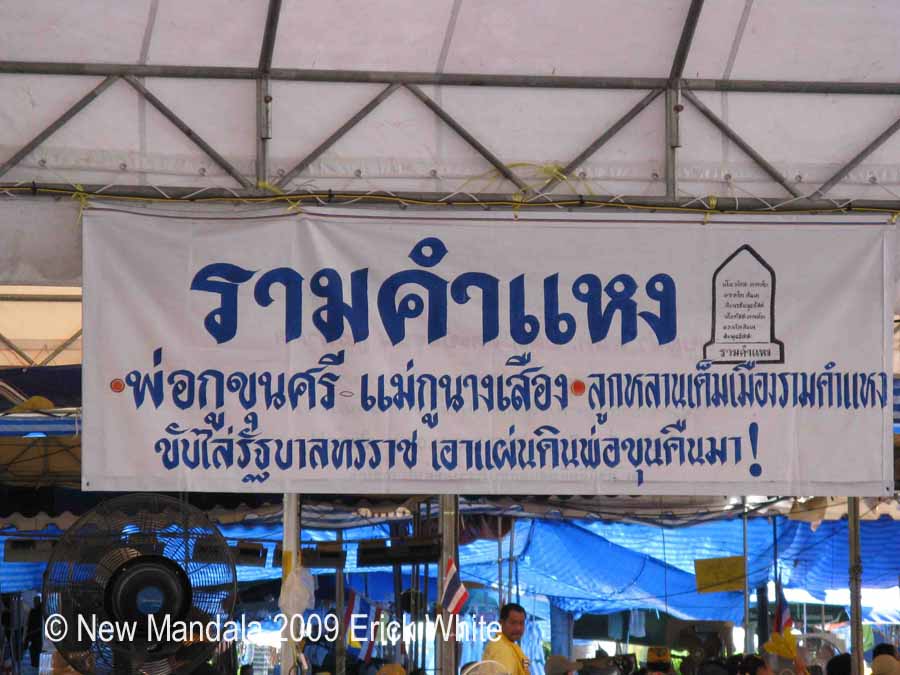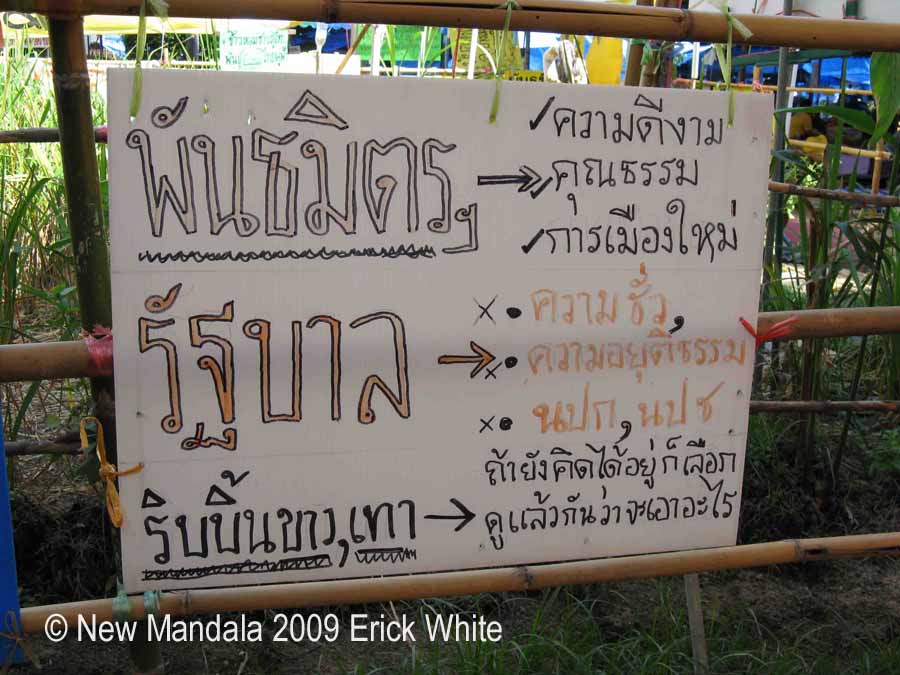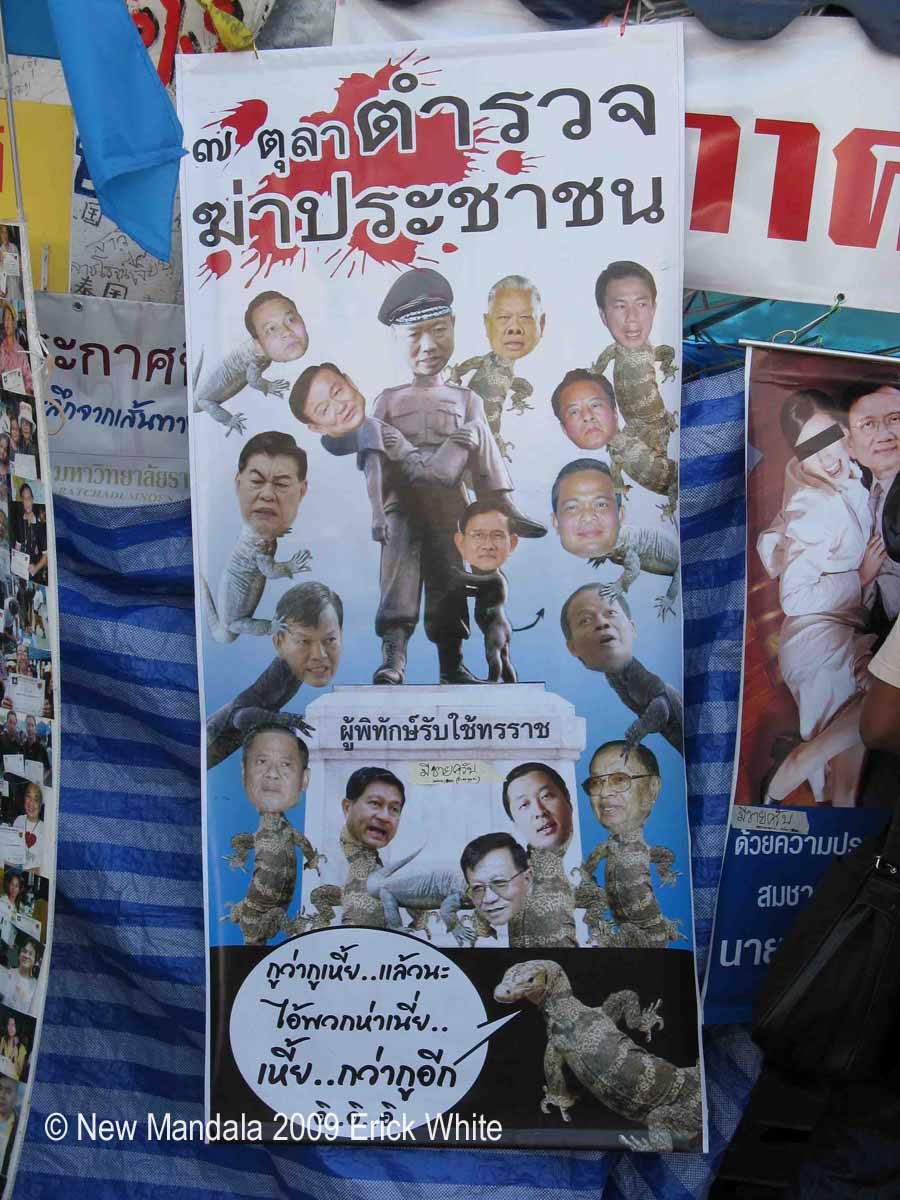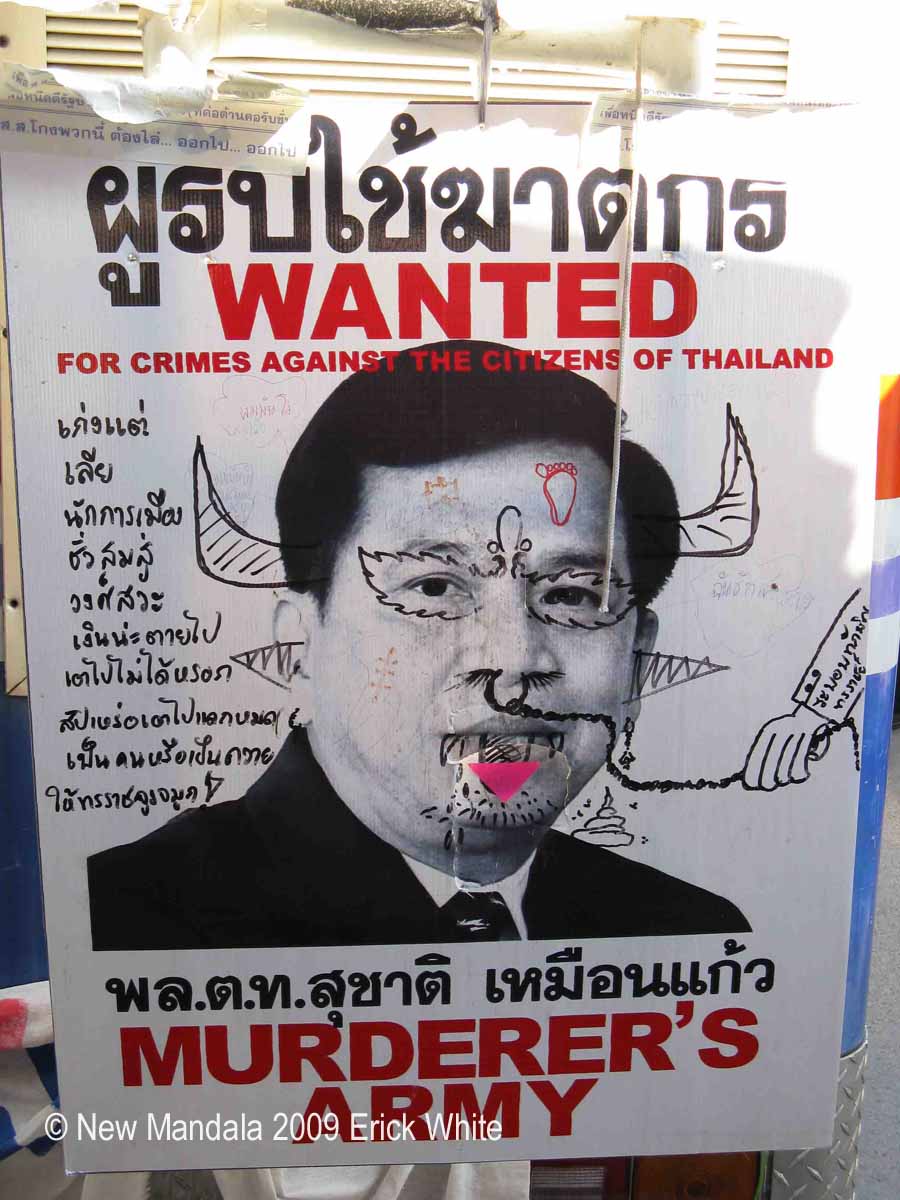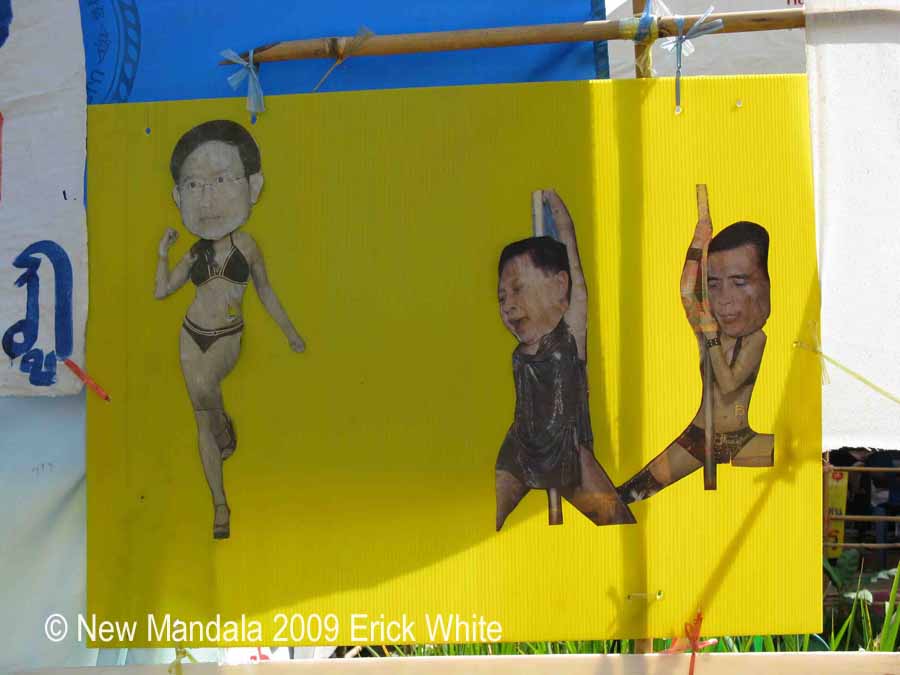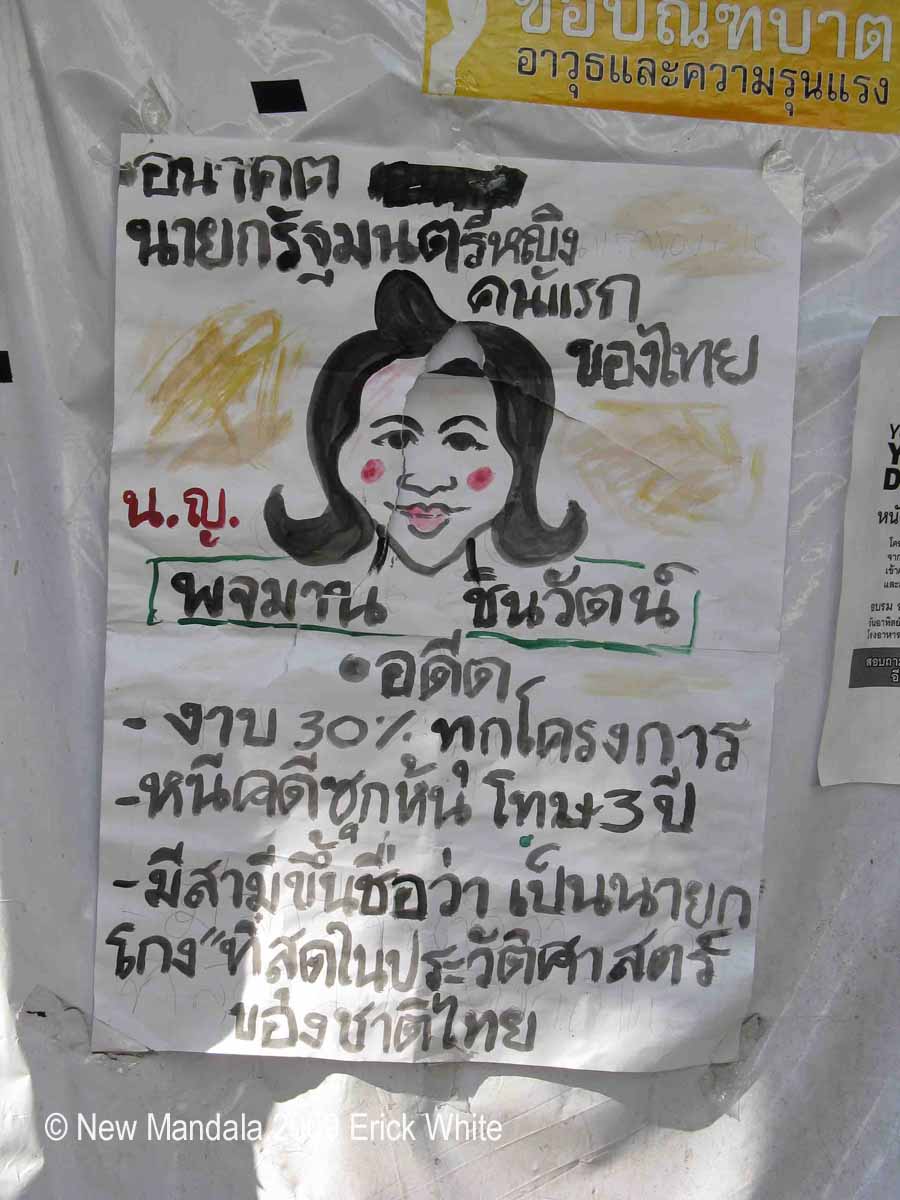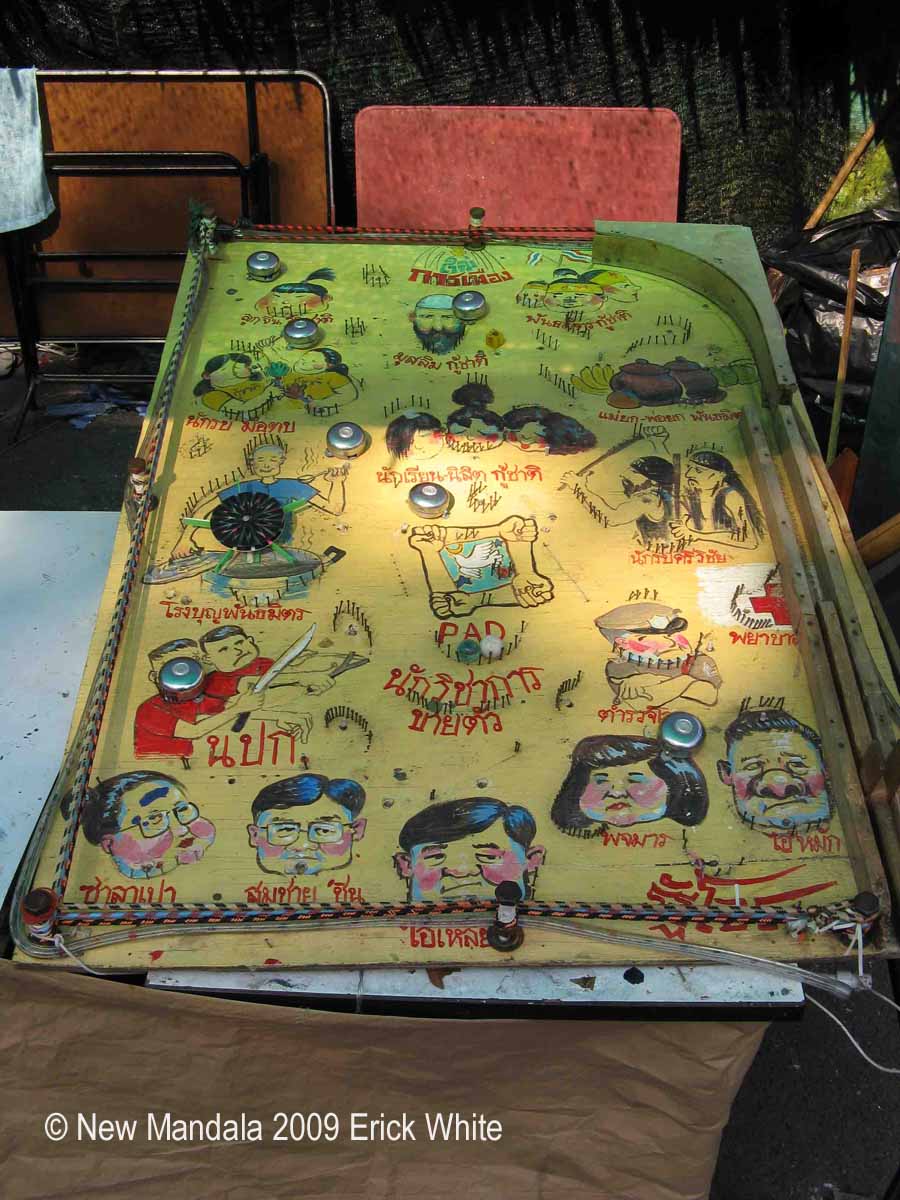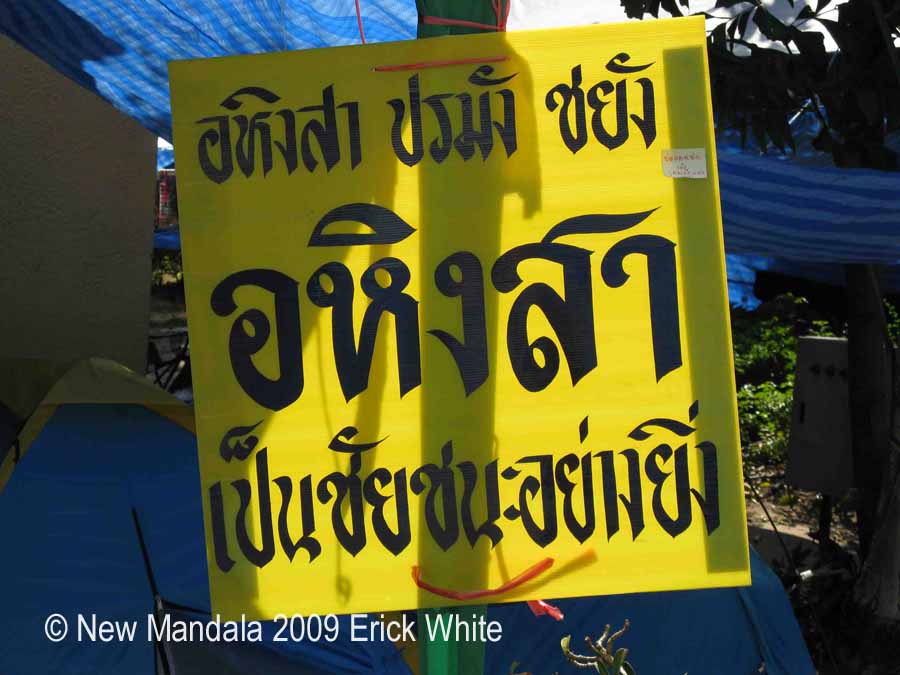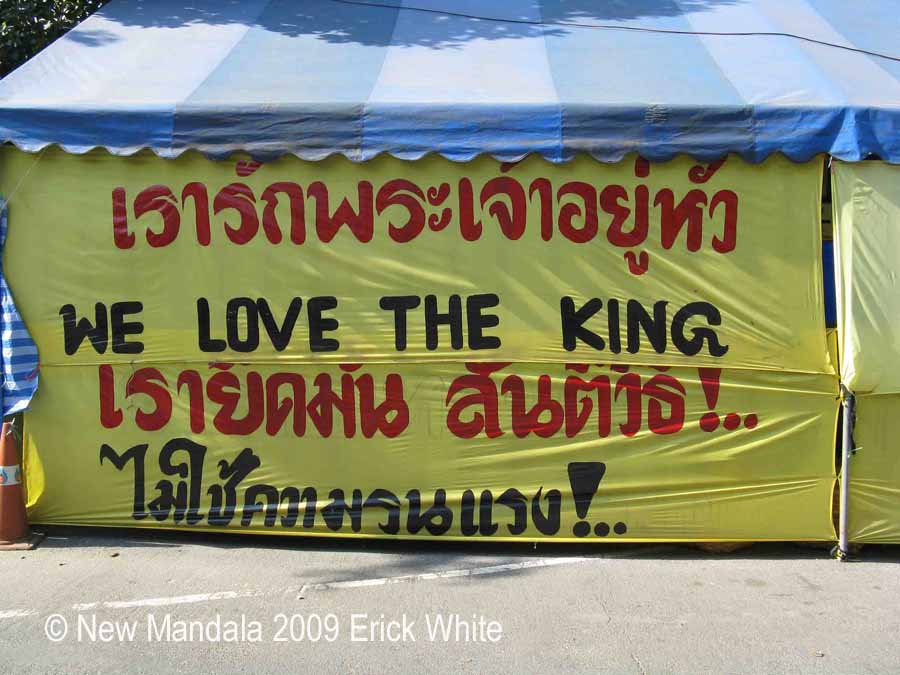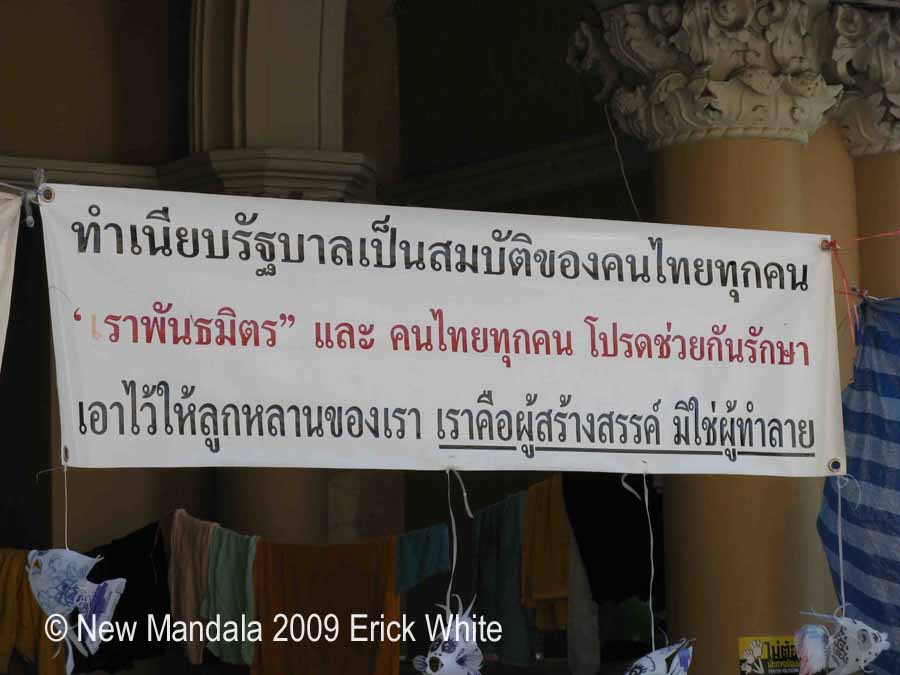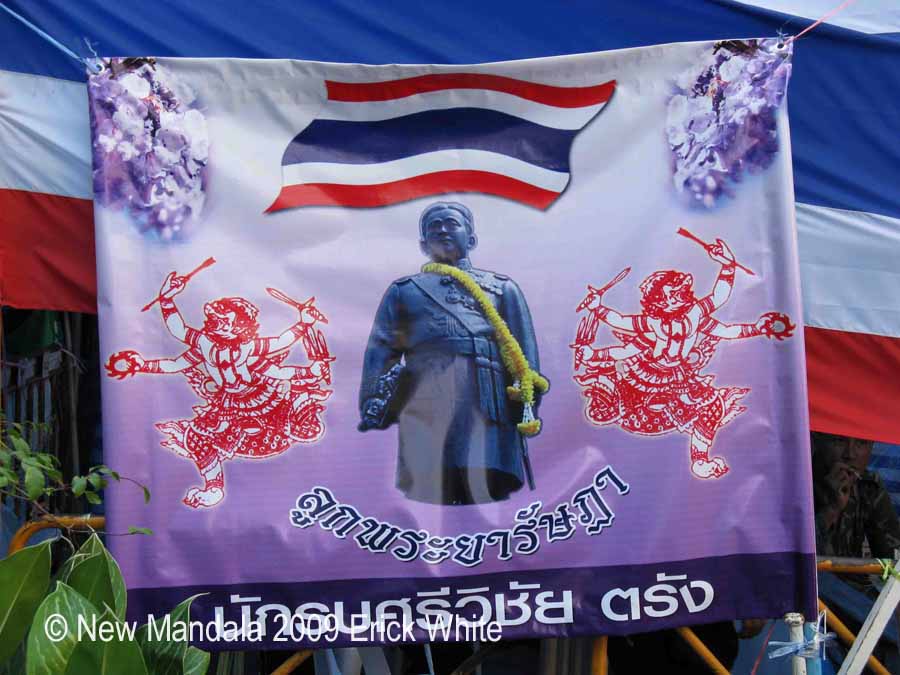On December 1 2008, I visited Government House and spent several hours exploring the PAD protest site. I went primarily because I was curious to see first hand the political slogans, graffiti and public art created by the PAD. I spent approximately three hours there, wandering around the site – both in the three-sided occupied soi that ran around Government House and inside the Government House compound as well.
While I talked to maybe a half dozen or so individuals, I was mostly focused on creating a visual record for posterity’s sake of one slice of the contemporary political moment. It turned out, of course, to be a rather serendipitous decision, as later that afternoon the PAD decided to end their occupation of Government House and shift the emphasis of their public protests to the occupied airports. I hope the following selection of photos will be of some use to those individuals in the broader Thai studies community who are interested in examining the political imagery and rhetoric of the last two years.
For convenience sake, I have grouped photos under a number of themes I found to be salient among the political slogans, graffiti and art in general. Of course, the placement of any single photo is somewhat arbitrary, as many combine several of these themes and even more themes could be distilled from all of the photos I took.
English Language Appeals to a Foreign Audience
In the area around the main entrance to Government House there were a considerable number of posters and art that contained solely or primarily English. They were clearly designed to try to translate the PAD’s hopes, fears, arguments and complaints into terms understandable to an international audience, as can be seen in the first two photos. There were also some posters that were more solicitous and tried to counter critical foreign reactions to the movement’s goals and strategies, as is evident in the third photo.
Political Violence and Martyrdom
Not surprisingly, this was one dominant motif among the signs and art posted around the site. The events of October 7, 2008 were central to this theme. The first photo in this group clearly shows how the PAD members who died on October 7 had been transformed into martyrs. This same poster was found throughout the whole site in many places. The second photo, a poster compilation of personal photos of the violence of that day, was one of many such posters surrounding like an aura the poster in the previous photo. This was one of the few moments when PAD members spoke to me directly on their own initiative, with many people taking me on a ‘tour’ through the poster’s photos, emphasizing in particular the images of police aiming guns. Both of these images were also located outside the main entrance into Government House proper. The last photo from inside Government House displays the willingness of PAD members to become future martyrs.
Royalism and the Nostalgia of Virtue
Also not surprisingly, this was also a prominent theme of much political art. While much of this focused on the current king, the PAD also reached much further back in history, including to the popular discourse and imagery surrounding King Ramkamhaeng, as this photos shows.
Moral Polarization and the Violent, Corrupt State
Much of the political art and graffiti centered on this theme too, for obvious reasons. The first photo in a very didactic and stark style presents the sharp dichotomy between the PAD and the government, as perceived by the protestors. Given the events of October 7, the police were a central symbol of the fallen state of the government, as shown in the second photo. The propensity to visually mock politicians, as seen in this photo, also was omnipresent in the PAD’s visual culture of protest. The PAD’s perception of itself as a virtuous substitute for an immoral, illegal government is evident in the mass-produced poster in the third photo. Handwritten commentary on the ‘official’ political art was often very interesting. Sometimes it consisted of just text, but in this case, the commentary clearly supplemented the original theme of the poster with the additional assertion that Somchai’s government was an ignorant, buffalo-like slave of an absent master.
The Eclecticism of ‘Folk’ Political Art
A significant amount of the political art at the site was mass-produced by the movement itself, and overall it presented a relatively coherent, structured and focused set of themes and images. But some of the most interesting and visually arresting art was handmade and represented the more idiosyncratic political views and visual imagination of a single individual. Some of it was quite large and didactic, as in the cloth banner of the first photo. Other imagery, as in the second photo, was much more simple and crude, but played on another pervasive theme in the site’s protest art – sexual degradation and perversion – in this case reinforcing the notion of a morally fallen government through the common idea of the go-go dancer. Fear of sexual inversion, instead of revelry in it, plays out in the poster of the third photo, with its warning about the dangers of Thaksin’s wife. And last, and one of my favorites, a very creative person turned these sorts of images into literal fun and pleasure by creating a politically-themed home-made pinball machine.
Nonviolence and Militancy
These contradictory themes – present in the PAD’s statements, goals and strategies – were also very evident in the political protest art at Government House. The first poster presents this in a very straightforward and direct fashion. At the same time, there was a certain self-conscious defensiveness about claims to non-violence as well, reflecting the criticisms that had been directed at the PAD by others. Thus much political art, such as the examples seen in the next two photos, insisted rather stridently that the PAD was, in fact non-violent despite what some would claim. At the same time, there was much political imagery that celebrated the idea of a virtuous conflict and the militant, patriotic necessity of resorting to ‘self-defensive’ violence, as is seen in the last photo of a banner hanging outside the Trang ‘branch’ of the “Sri Vijaya Warriors”.
Religiosity and the Virtuous Call to Protective Arms
On the morning of December 1, I didn’t see any member of Santi Asoke at Government House, although I did see two separate monks visiting the protest site, one with a small entourage of a half-dozen folks in tow. Just as interesting though was the fact that throughout the protest site, both inside and outside Government House, there were a number of shrines set up for the worship of various spiritual beings. A shrine to King Taksin, for example, sat directly across from the main entrance into Government House, while shrines to Luang Phau Thuad and Krom Luang Chumpon were also prominently located inside Government House. The first photo shows the blending of militant imagery and a shrine at one location. Finally, given their fear of the violence directed at them, it wasn’t surprising to come across the final image, a prayer attributed to Ajan Mun that will provide protection from harm to those who recite it. This particular version of this poster and prayer could be found throughout the protest site.
[Erick White is an Instructor in the Antioch University Buddhist Studies in India program.] Facebook
Facebook  Twitter
Twitter  Soundcloud
Soundcloud  Youtube
Youtube  Rss
Rss 